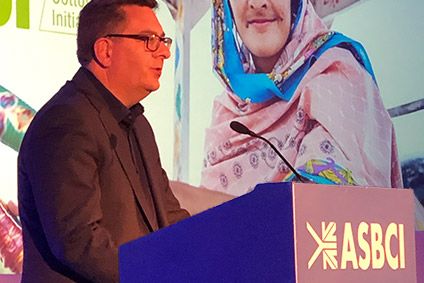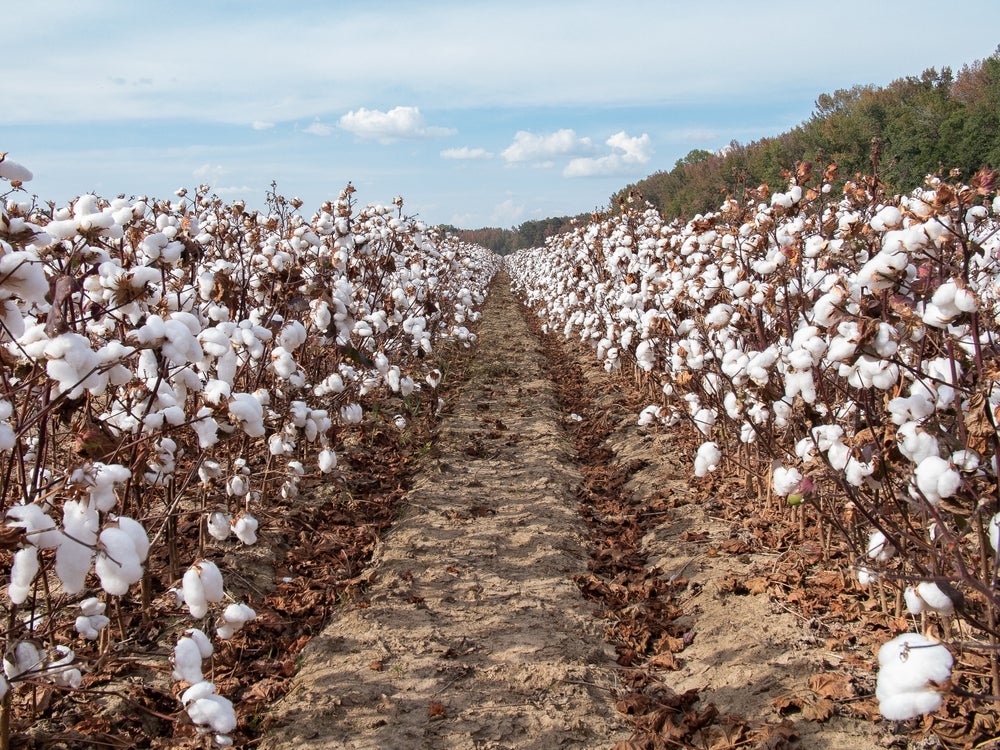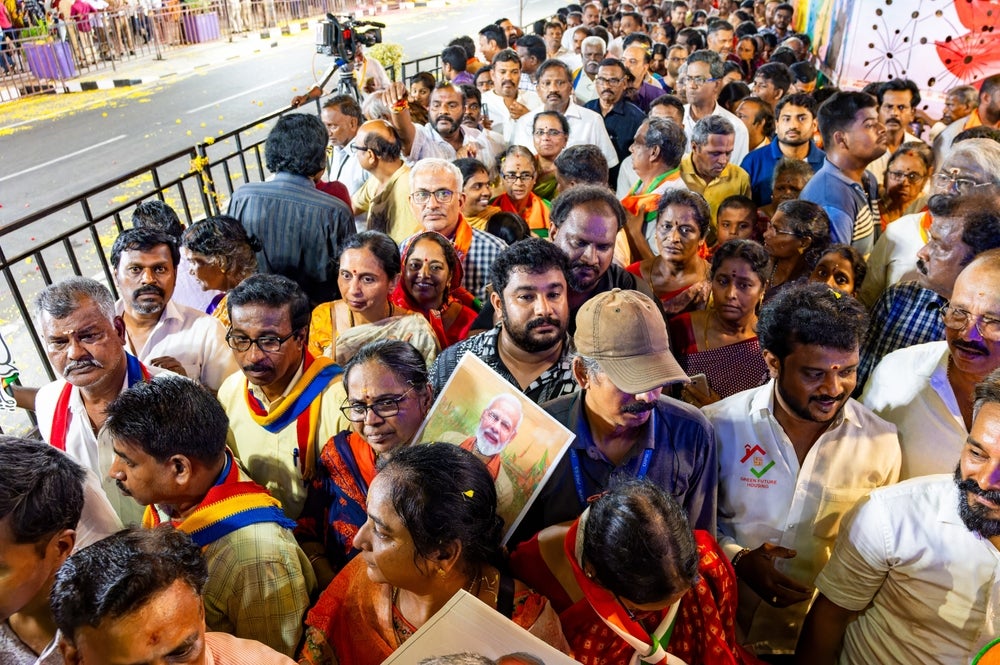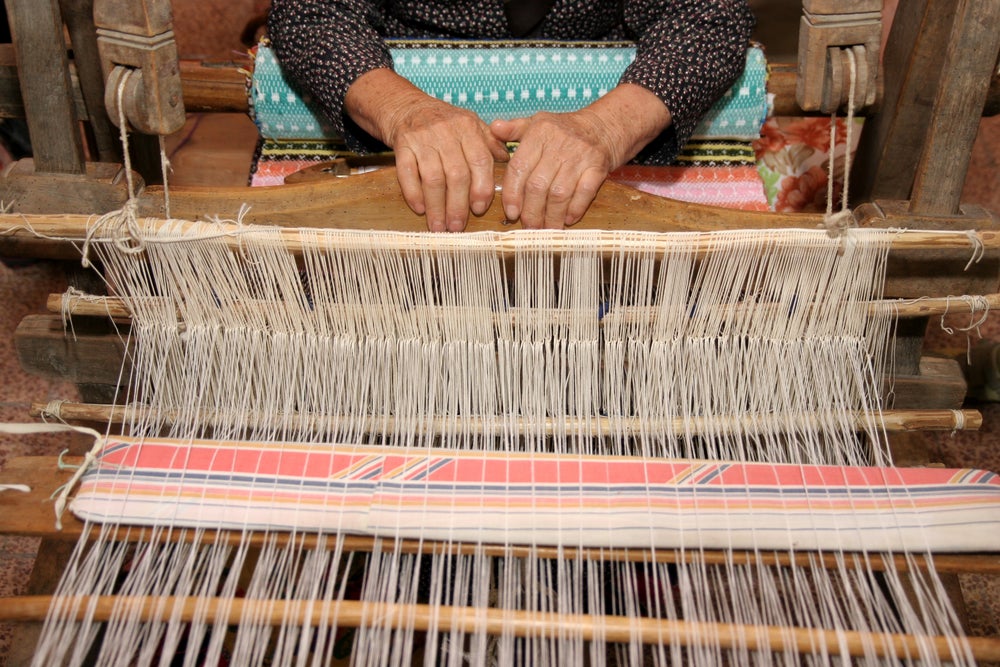
British retailer Marks & Spencer (M&S) has this season seen its entire clothing range made from 100% sustainable cotton – one of the first retailers to reach this milestone. Key to its achievement is the Better Cotton Initiative, the largest sustainable cotton programme in the world, according to Phil Townsend, technical lead, environmental sustainability and technical services at M&S. He also believes the transformation of the cotton sector should be a blueprint for other raw material initiatives.
Almost a third of all fibre used in textiles is cotton – and whilst cotton is often perceived as being bad, there have been some very positive strides made in the sector, Phil Townsend explains.
Indeed, when the retailer embarked on its journey towards sourcing more sustainable cotton through its Plan A sustainability framework back in 2007, it decided to address the challenges in what is the number one raw material used by M&S.
Cotton is grown in more than 80 countries and supports the livelihoods of some 300m people worldwide. However, without the use of sustainable practices it can have devastating effects, Townsend told the audience at the recent conference ‘Time for change – facing up to fashion’s sustainability and ethical challenges’ organised by the ASBCI (Association of Suppliers to the British Clothing Industry).
Although only grown on 2.5% of the world’s agricultural land, cotton is a very pesticide-intensive crop and consumes 16% of all the insecticides used worldwide, according to Organic Cotton, a joint web platform of organic cotton communities worldwide. These pesticides are then often washed out of the soil, polluting rivers and groundwater.
See Also:
In addition, if cultivated intensively it requires large amounts of water for irrigation, which can cause soil salinisation (increasing the salt content of the soil), particularly in dry areas – and hence a degradation of soil fertility. In fact, according to the World Wide Fund for Nature (WWF), some 20,000 litres of water are required to produce a single kilo of cotton; equivalent to one T-shirt and a pair of jeans.
How well do you really know your competitors?
Access the most comprehensive Company Profiles on the market, powered by GlobalData. Save hours of research. Gain competitive edge.

Thank you!
Your download email will arrive shortly
Not ready to buy yet? Download a free sample
We are confident about the unique quality of our Company Profiles. However, we want you to make the most beneficial decision for your business, so we offer a free sample that you can download by submitting the below form
By GlobalDataMeanwhile, cotton production also contributes to climate change as industrial fertilisers are produced using “considerable quantities” of finite energy sources (accounting for 1.5% of the world’s annual energy consumption), releasing large amounts of carbon dioxide, Organic Cotton states.
But over the last few years “collectively and through collaboration, we’ve seen some real improvements and some of those issues being tackled,” Townsend says. “There are still issues and challenges out there, of course, but it’s safe to say that there has been a significant improvement.”
“Collectively and through collaboration, we’ve seen some real improvements and some of those issues being tackled”
Plan A
One such success story is the retailer’s eco and ethical programme Plan A. In the 12 years since its launch, Plan A has delivered 296 eco and ethical commitments, won 240 awards and saved more than GBP750m in costs through efficiencies such as using less energy, fewer transport miles and reducing packaging.
Two years ago, M&S launched Plan A 2025, building on the first ten years of the programme with a focus on wellbeing, transforming lives and communities, and caring for the planet.
“When we launched our Plan A we decided we needed to really address these issues in what was then, and still is, our number one raw material. Our customers really love cotton and of course, some of our big market share areas like underwear, nightwear, and socks rely very heavily on cotton.”
As part of its initial Plan A, M&S made a public commitment to source 25% of its cotton more sustainably by 2015 and 50% more sustainably by 2020.
“Initially, we started sourcing fair trade, organic and recycled. We wanted to work with credible, independent standards that were independently verifiable,” Townsend says, noting the advent of the Better Cotton Initiative (BCI) “enabled us to really scale and accelerate our sustainable cotton uptake.
“This season (spring/summer collection) in clothing, we’ve sourced 100% of our cotton more sustainably”
“We actually elevated our ambition over the recent years, and I’m really pleased to say that this season [spring/summer] in clothing, we’ve sourced 100% of our cotton more sustainably.
“We’re one of the first retailers to get to that milestone, but we couldn’t have done it on our own. It’s been a collective effort with our suppliers. But it represents a real achievement.”
Better Cotton
Non-profit BCI has played a key role in helping M&S reach the milestone. The initiative promotes better standards in cotton farming and practices, with partner retailers including H&M, Gap and Levi Strauss. Last month, it reported that cotton produced in line with its Better Cotton principles and criteria now accounts for 19% of global cotton production, with 2m licensed BCI farmers having produced 5.1m metric tonnes of Better Cotton in the 2017-18 cotton season.
“It’s now becoming the mainstream sustainable cotton option. It’s been fundamental to us arriving at our 100% sustainable cotton position today,” Townsend notes.
“We’re starting to reach a real tipping point of truly sustainable and transformational change across the cotton industry”
“But BCI themselves have some very ambitious targets as well. They want to get to 30% of global cotton production by 2020. They’re currently just under 20%, so they’re making good progress. As we accelerate that, we’re starting to reach a real tipping point of truly sustainable and transformational change across the cotton industry.”
In 2009, M&S began working on a project in Warangal, India, funded directly in partnership with BCI and WWF, to develop ways of producing cotton that cares for the environment and respects the rights and well-being of workers. In the 2010 cotton season, the project produced its first harvest of Better Cotton. It was extended in 2011 for an additional three and a half years and to include 20,000 farmers – and today helps improve the lives of some 25,000 farmers across several hundred villages and is self-financing.
“It has been incredibly successful,” says Townsend, noting “some really impressive results” include a 30% reduction in water use and 1 50% reduction in fertiliser use, along with increasing yields and profits for the farmers.
A blueprint
As M&S has been working to redress the balance around cotton it is also starting to share this narrative with customers and colleagues – communicating the processes that go into making a garment in a more sustainable way. Such steps can go a long way in explaining the reasons why there may be a higher price point for more sustainable apparel.
“The human stories help restore the emotional investment in purchasing garments. Of course, emotional investment is about finding something that makes you look and feel great – but now we’re seeing that it also includes the fundamental basics of sustainable sourcing, which I think is really exciting.
M&S has most recently been involved with other initiatives, such as the CottonUP guide to sourcing sustainable cotton, a publicly available online tool launched last summer and developed by Cotton 2040, a coalition of brands and other stakeholders. It provides guidance for brands and retailers who are new to sustainable cotton, helps them understand the business case for sustainable cotton, how to develop a sourcing strategy, how to work with their supplies, as well as decide what particular sustainable cotton option is right for their brand, customer profile and product.
And with so many resources available there’s really no excuse for companies to drag their heels when it comes to using sustainable cotton.
The 2025 Sustainable Cotton Challenge is a call to action for brands and retailers to commit to source 100% of their cotton from the most sustainable sources by the year 2025, and was set up two years ago by His Royal Highness The Prince of Wales his International Sustainability Unit.
“There really isn’t any excuse now. We’ve now got over 50 brands who have signed up to the pledge, and they’ll be reporting out against their progress on an annual basis as they head towards 2025.”







